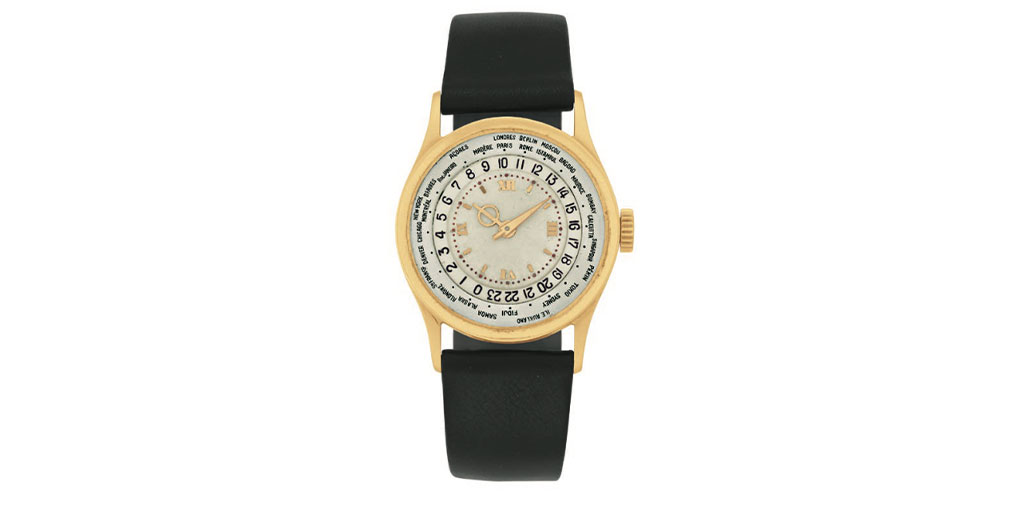When Patek Philippe introduced its 2022 collection of timepieces at the Watches and Wonders fair in Geneva last month, fans of the firm’s World Time model, an icon of 20th century design, had reason to celebrate. The Geneva-based firm introduced not one, not two, but three new world timers, all of which seemed to suggest that after taking a two-year hiatus from traveling, watch lovers are ready to hit the road.
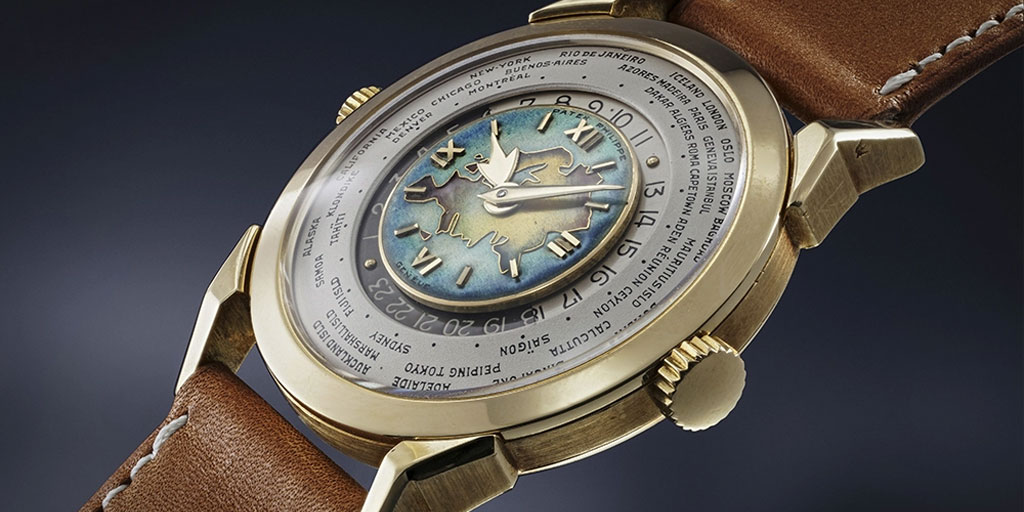
Among connoisseurs, however, no modern World Time watch could ever rival the rarefied, romantic appeal of a vintage model. Invented in the early 1930s by the Genevan watchmaker Louis Cottier, the mechanism at the heart of the World Time watch allows for the simultaneous display of the time in the 24 time zones established by the 1884 International Meridian Conference in Washington, which fixed the prime meridian at Greenwich, England, forming the basis for Greenwich Mean Time, or GMT.

Cottier worked with Patek Philippe to create its first “Heure Universelle” (HU) watch in 1937. Known as ref. 515, the model was a rectangular pink gold Art Deco-style wristwatch featuring 28 place names, including Prague, Moscow and Fiji, engraved on a rotating exterior bezel.

In the years since, the model has transformed into a collector darling—though experts agree that it tends to get less attention than some of the brand’s other vintage talking pieces.
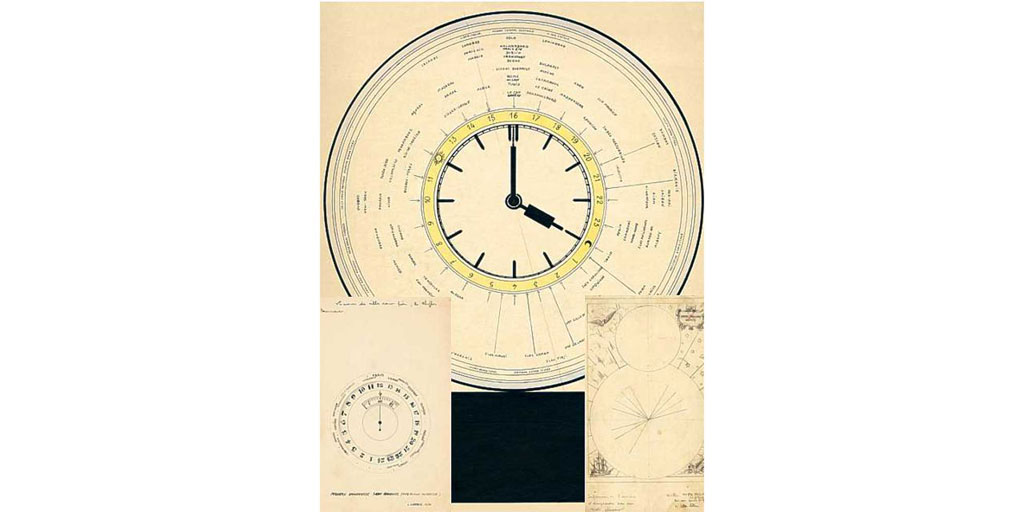
“The World Time is one of the ultimate complications in the pantheon of Patek Philippe, yet often put on the sidelines,” says John Reardon, founder of Collectability. “With much attention given to the perpetual chronographs, chronographs, tourbillons, repeaters, etc. the World Time is often neglected the appropriate attention it deserves.
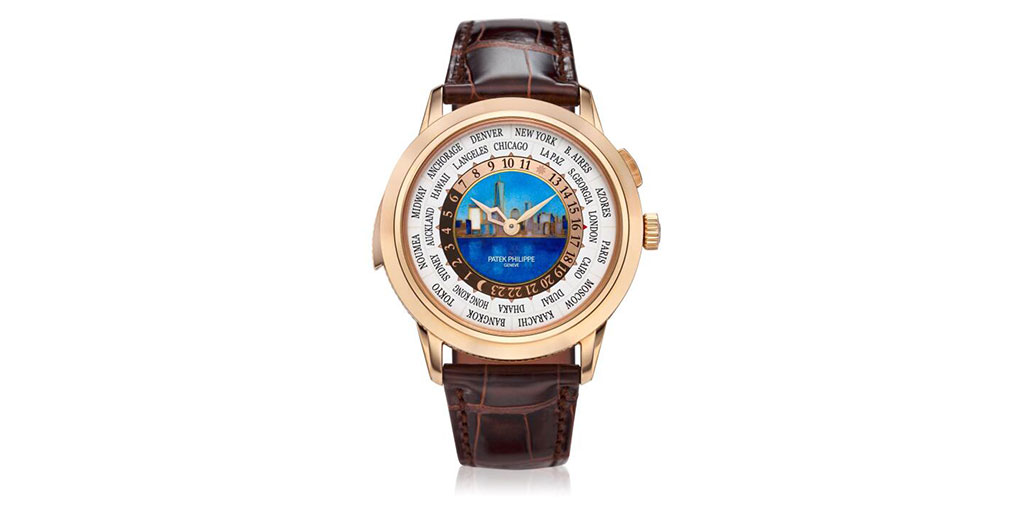
“However, a look at the global world records for watches shows a number of ref. 2523 HUs and now we see the results of the highest end modern World Time, the ref. 5531R,” Reardon says, referring to the c. 2017 pink gold Patek Philippe ref. 5531R-010 World Time Minute Repeater that sold at Sotheby’s Important Watches sale in New York in December for nearly $2.2 million. “This shows the magic of the World Time,” he says, “and the respect the market places on this important part of Patek Philippe history.”

More than any other model in the venerated brand’s repertoire, the World Time reflects a fascinating narrative of travel, and history, in the 20th century. From the exotic place names that appeared on past models—including “Bagdad,” Bombay, Klondike and Saigon—to the political considerations that impacted what some cities were called, or even which time zone they appeared in, Patek’s world time watches offer a curious lens on to the locations that appealed to the earliest globetrotters.
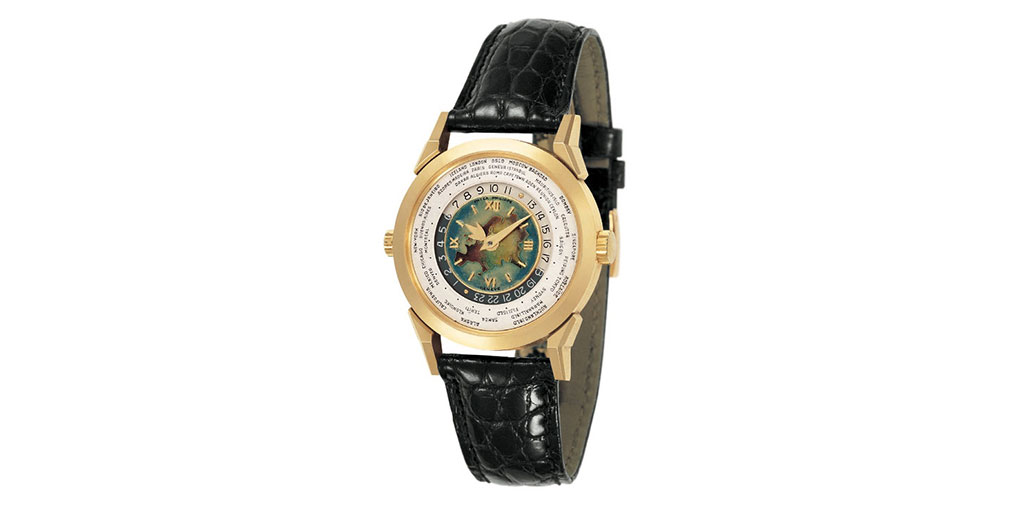
“The early models are really fun because they’re kind of the history of the world,” says Keith Davis, head of watches at Christie’s in New York. “The first thing I do when I look at a World Time watch is I look to China on the bezel to see how they labeled the capital at that time. China was going through so much during the production of the World Time: the revolution in the 1950s, the introduction of Peiping, Beijing, Peking, Nanking—they all change from the late 1930s to 1950s, which is the sweet spot for vintage Pateks or vintage Louis Cottier world timers.

“It’s also an authentication thing,” Davis adds. “Because, obviously, if I have a 1945 World Time and it says Beijing on the dial, we’ve got problems. That’s where my eyeballs go to first. Then you can understand: Are the cities in French? In English? You can put together the story of the watch just based on the cities. It’s a lot of fun if everything matches.”
Below, we highlight the key World Time references that all Patek lovers should know.

Ref. 515 and Ref. 96: The Earliest World Time Models
The two earliest World Time references, ref. 515 and ref. 96, are distinguished by their fixed internal city bezels, which could only be adjusted by a watchmaker. (Later models, such as ref. 542, which was introduced in 1937, feature the city names engraved on a rotatable bezel.)
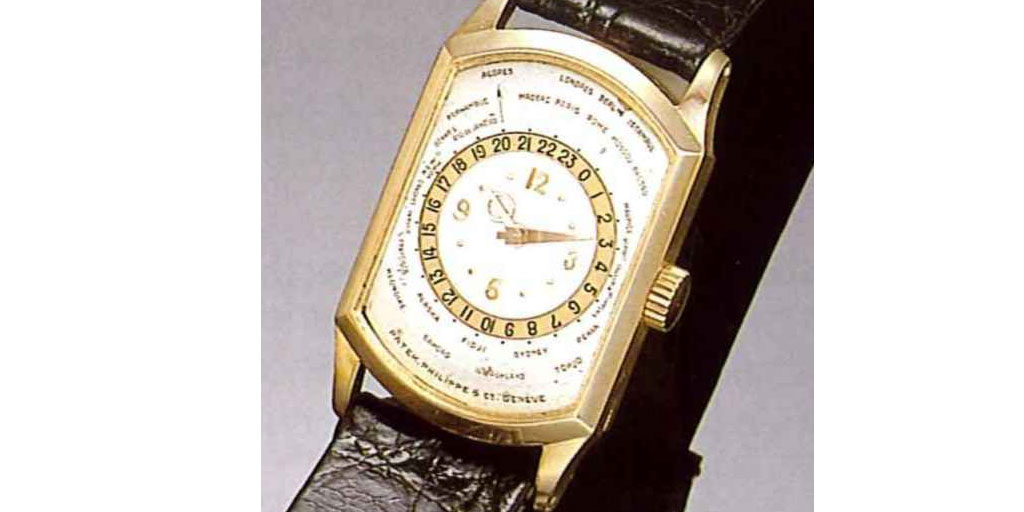
The catch? They are next-level rare. “I doubt we’ll ever see a 96 World Time from 1937 come to market,” says Davis. “Quite frankly, I don’t think there is a 515 in private hands anymore. I think the Patek Museum has it.”
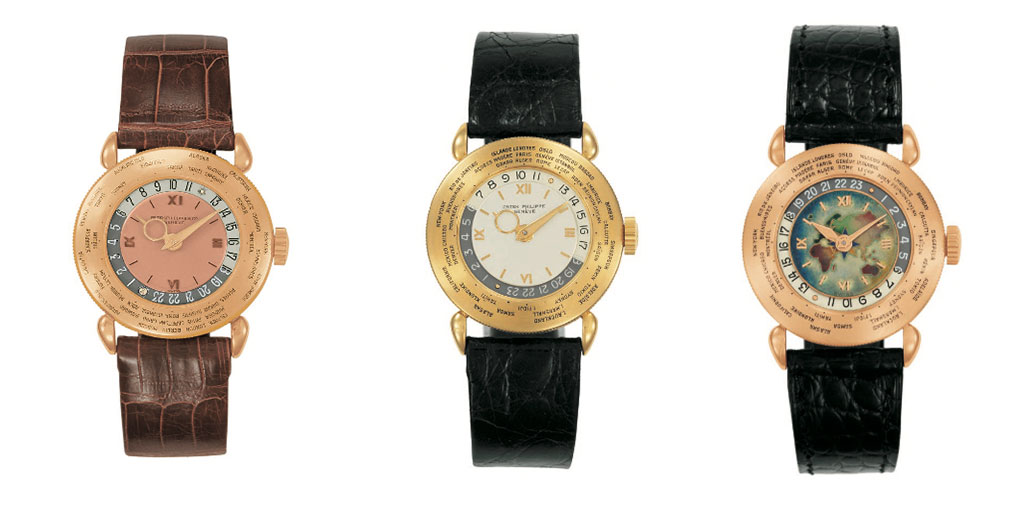
Ref. 1415 and Ref. 2523: Collector Darlings
More attainable yet still exceptionally rare are the next iterations of the World Time watch, ref. 1415, which was produced between 1939 and 1954 in a 31 mm case size, and ref. 2523, introduced in 1953 and discontinued in 1965.
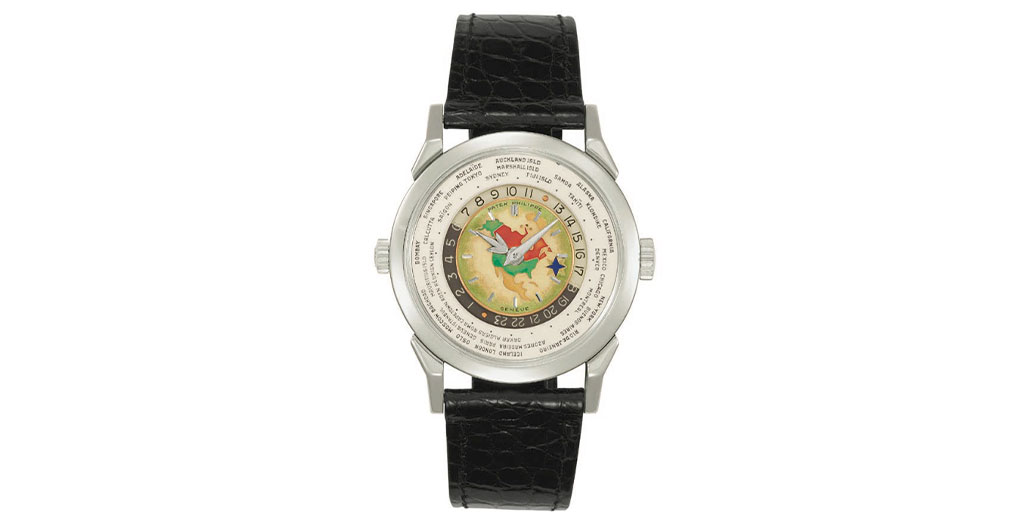
“The 2523 will always bring more money than the 1415,” says Daryn Schnipper, chairman of Sotheby’s international watch division. “It’s somewhat rarer than the 1415, which is still quite rare. It’s thought that only 82 watches of the 1415 were made. And there were far fewer 2523s—a total of 45.” Schnipper attributes the attention paid to the ref. 2523 to the fact that, at 35.5 mm in size, “it’s a much bigger watch.”
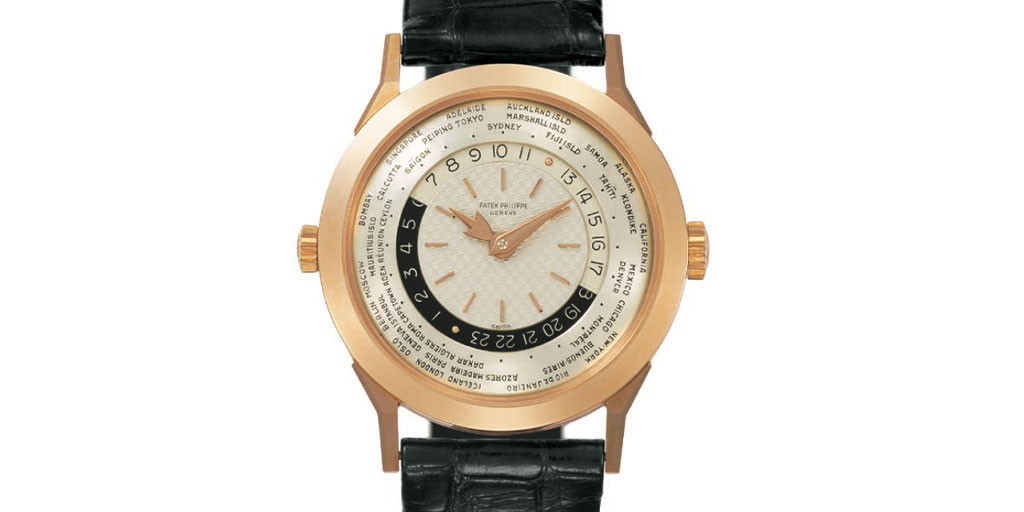
“Any good 2523 is going to bring at least a million dollars, and that’s if it doesn’t have any enamel on it,” Schnipper says. “If it’s one with an enamel center, it can bring up to $4 million.”
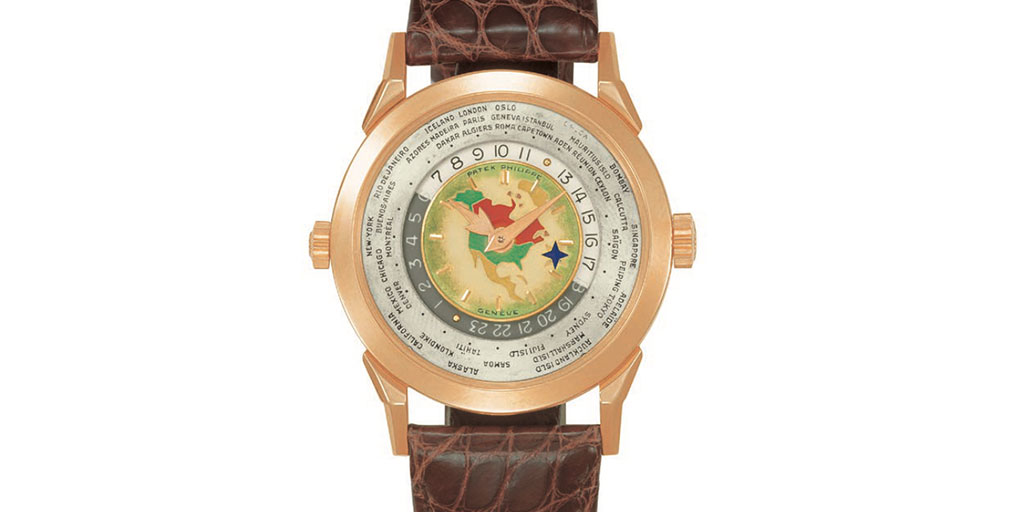
Reardon agrees that the model’s more wearable dimensions are a big reason why it’s so sought after. But size is just one factor. “The majority of 2523s feature enamel dials, most notably the cloisonné enamel dial,” he says. “Work of art is an understatement. These watches embody the best of all things vintage Patek Philippe aesthetically, mechanically, and of course with their extreme rarity. And their current market values reflect this and put the Nautilus in the dust.”
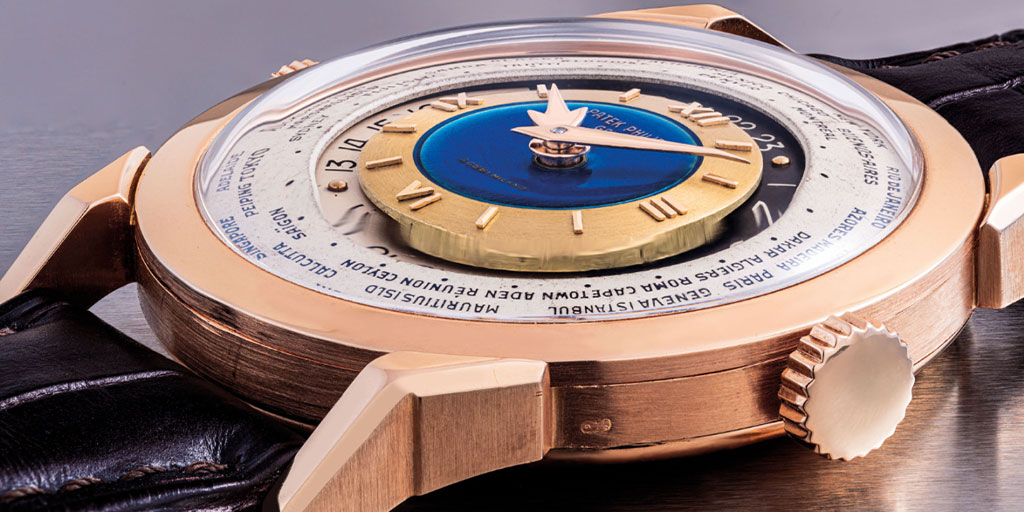
Take the c. 1953 ref. 2523 in pink gold retailed by Gobbi Milan that sold at Christie’s Hong Kong in 2019—for nearly $9 million.
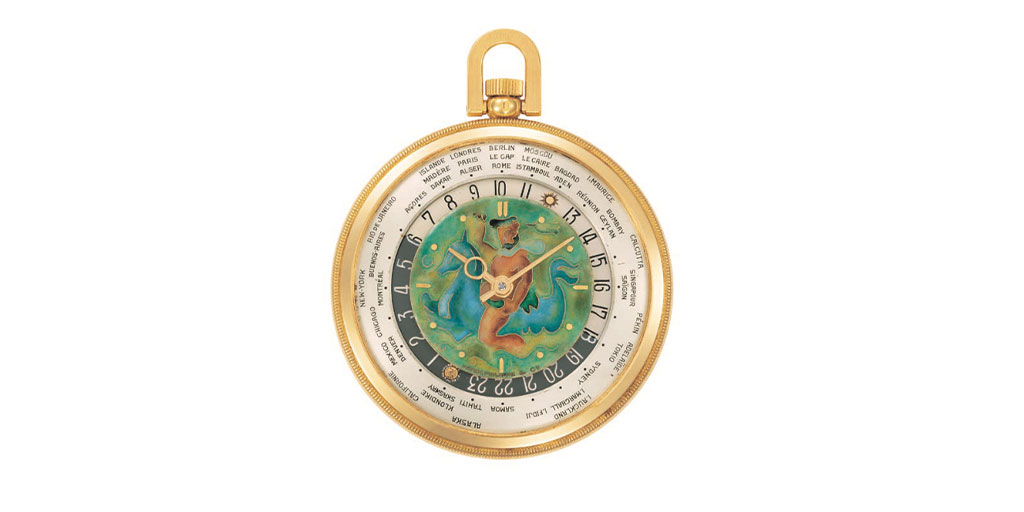
Cloisonné Enamel Dials: Poetry in Motion
A vintage World Time model with a cloisonné enamel dial is where poetry and watchmaking meet. The technique involves an artisan marking off the outlines of the continents with a thin gold wire, then filling in the compartments with various enamel colors to reproduce the oceans and land masses, while repeatedly firing the enameled dial plate at high temperature in a kiln.
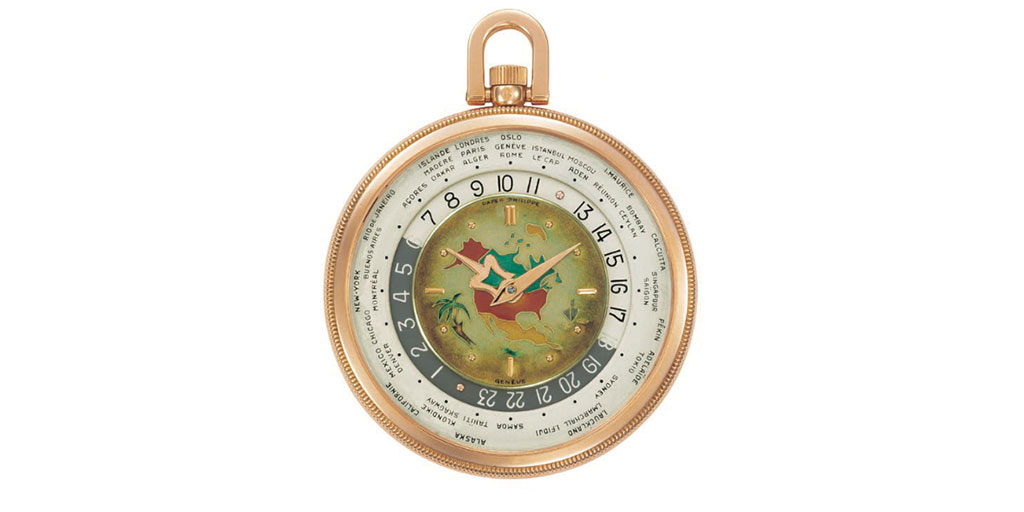
Highlighted by unique, hand-painted maps of the Americas, Europe or the entire world, vintage World Times featuring richly colored maps, whose hues remain as vibrant today as they were upon leaving the factory, are the epitome of horological art. And if you know how to interpret them, they also offer compelling historical insights.
“What’s really fascinating is if you look at the majority of the cloisonné dials that were made for the 2523, they’re almost exclusively for South or Latin America,” says Schnipper. “Because that’s where the wealth was.”
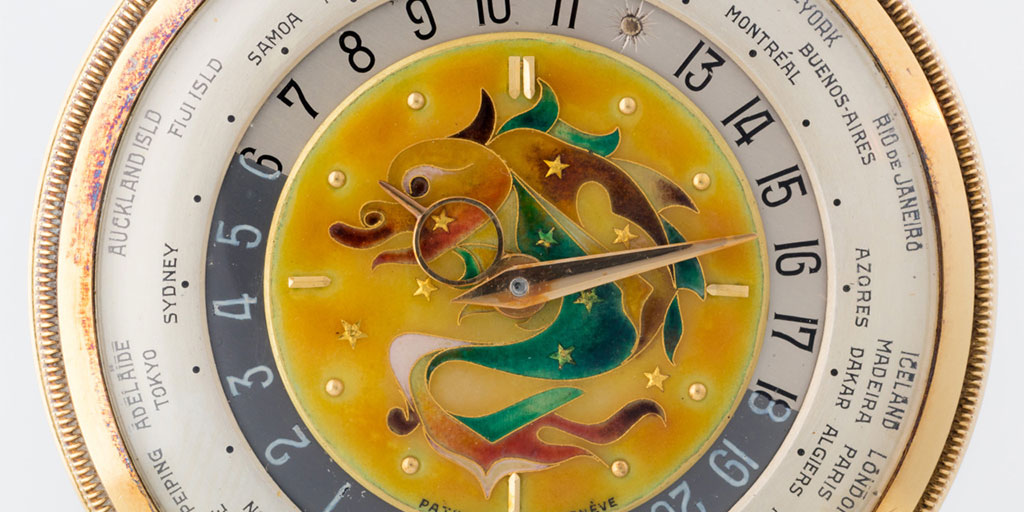
Ref. 605: HU Pocket Watches, Undervalued… For Now
The last big collecting category for World Time aficionados is centered on ref. 605HU, Patek Philippe’s Heures Universelles pocket watch, the earliest timekeeping device to feature Cottier’s pioneering mechanism. For roughly 30 years beginning in 1937, fewer than 100 examples were made, mostly in yellow gold, including a select number from the late 1940s featuring cloisonné enamel dials.
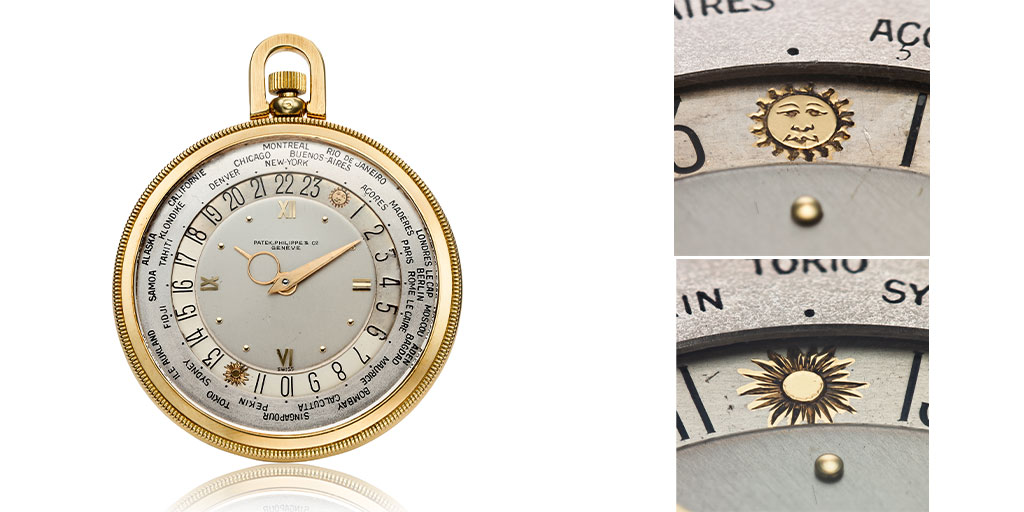
One such watch is scheduled to hit the block at Christie’s Hong Kong on May 24. Manufactured in 1948, and sold in 1954, the 18k gold open-faced keyless lever world time watch with polychrome cloisonné enamel dial depicting the entire globe appears at auction for the first time, carrying an estimate of HK$5,000,000–10,000,000, or approximately $637,000 to $1,274,700.

“It’s everything you want in a pocket watch,” says Davis. “The market has it undervalued in relation to the wristwatches. But we may see a change here. This watch could send a new benchmark for pocket world timers.”

